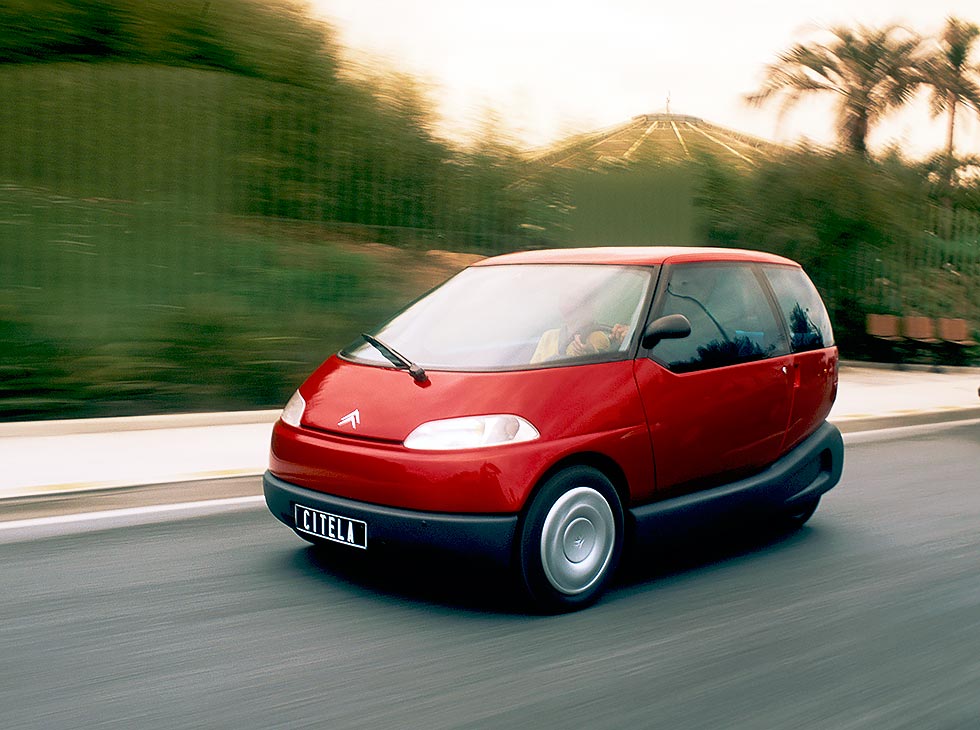Citroën Citela – 1992. Chronic congestion and problematic parking due to our ever-expanding population and urbanisation is sadly nothing new. Back in the 1990’s, with Paris suffering heavily from these urban pressures, French car manufacturers took up the challenge of building a car to suit every need and help alleviate some of the more pertinent problems. One such concept car, was Citroën’s modular Citela (Citroën Electric Automobile). Unveiled in the French pavilion at the Universal Exposition of Seville in 1992, the Citela was Citroën’s response to Renault’s own electric folding ‘Zoom’, which was revealed just a couple of months earlier. The Citela had an ace up its sleeve though, as it was able to be transformed from a coupé to a mini estate or a pickup truck thanks to its modular detachable passenger cell that, according to the carmaker, could be achieved in as little as five minutes.

Bearing similar design features to Citroën’s ECO 2000 project, the quirky and futuristic Citela, with its overhanging protective plastic rear skirt and synthetic shell, was a practical city car ready for a life of potential dinks and donks – something all too common for a car amongst the Paris suburbs.
The car was built mostly using interchangeable plastic parts that were made from clearly labelled recyclable materials – something car makers were slow to adopt on production-run models until much later. Weighing only 790kg and with its compact dimensions: 2.96m (L), 1.55m (W), 1.44m (H), Citela had a thing or two it could teach modern bloated vehicles and these characteristics helped the car achieve its purported top speed of 68mph (110km/h). Acceleration from 0-30mph took less than 8 seconds too, thanks to its reasonably powerful 72V/20kW power unit. The electric motor was also said to be good for at least 100,000km.
The automatic Citela could travel up to a claimed 130.4 miles (210km) on a charge due to its capable 14kWh NiCd battery that was located in both the front compartment and the central tunnel. However, its range was not without caveat, in that the mileage stated was only achievable at a steady 25mph. The car was equipped with two charging sockets hidden under a hinged rear number plate, which allowed for both rapid – 1.25 miles of range per minute – and slow charging – a conventional 220V socket could fully charge the battery in eight hours.
Inside the Citela there was no conventional gear selector and instead the driver would select forward, neutral or reverse via an assortment of buttons, a bit like the modern day Hyundai Ioniq Electric. There was also a pioneering display system that showed remaining range and recommended driving conditions. It also offered power management through three preprogrammed driving modes to ensure the maximum compromise between performance and endurance. In many ways the Citela was revolutionary for its time and despite Citroën having invested more than a million kilometres in testing, the novel Citela never made it to being anything more than just a concept.





